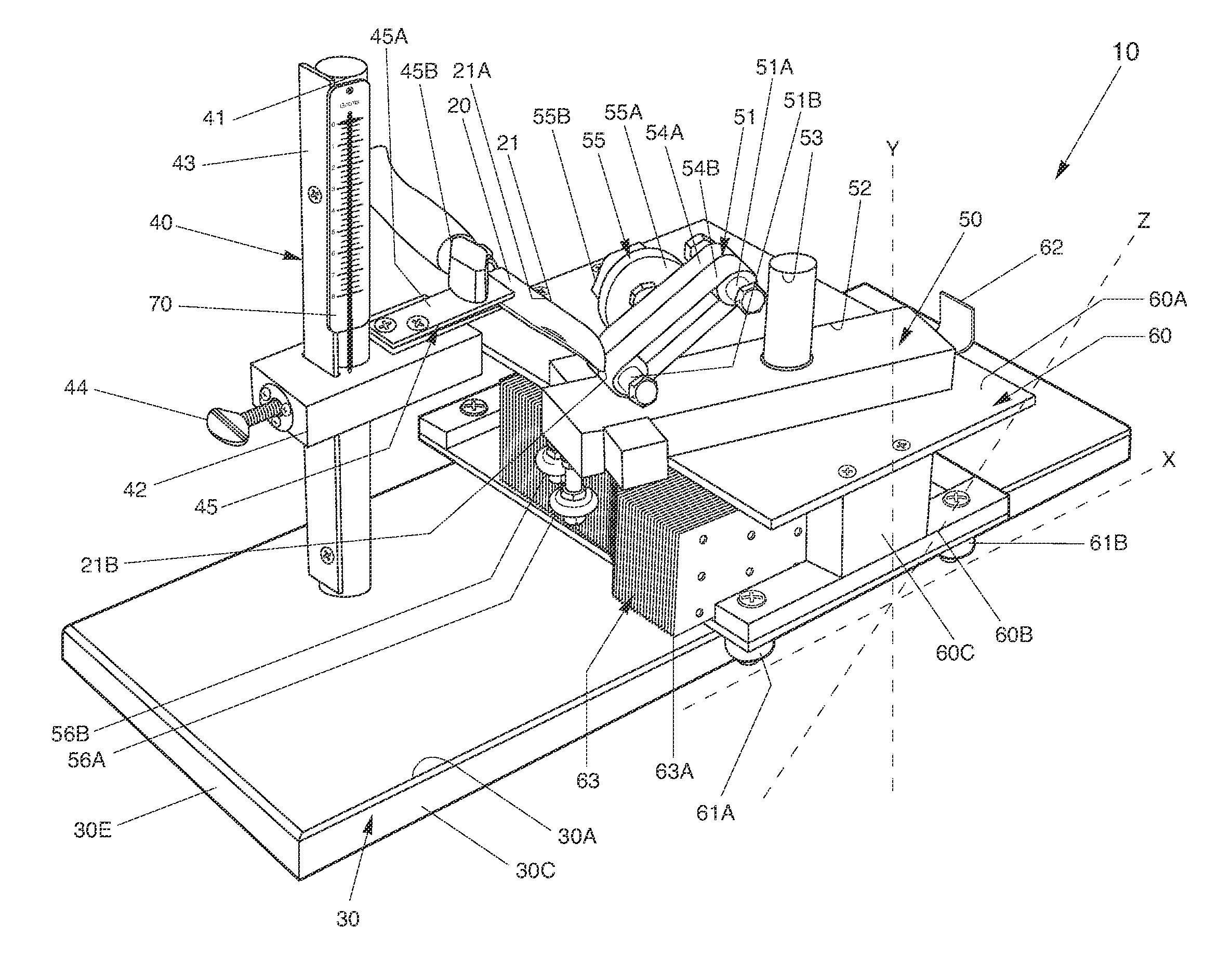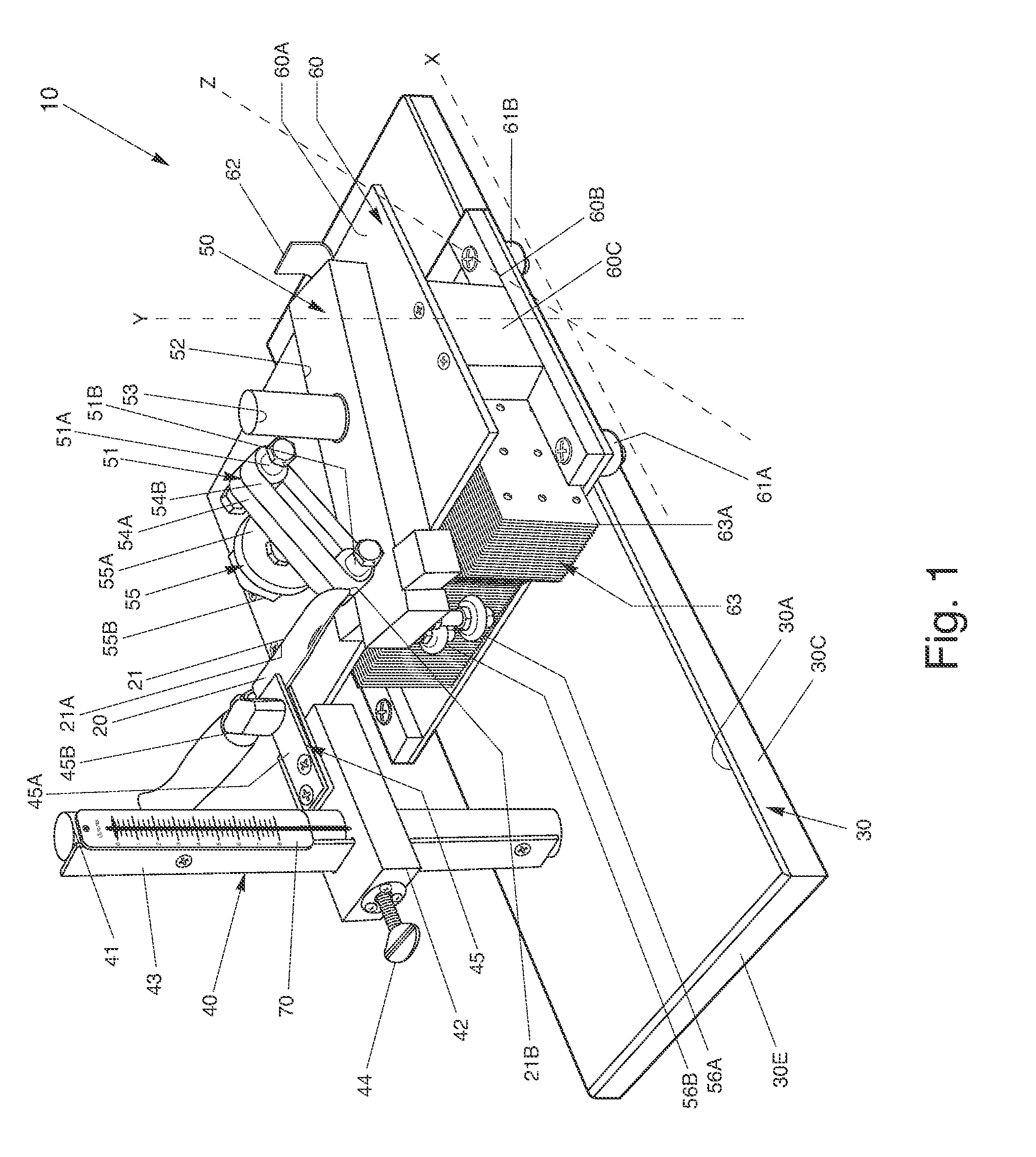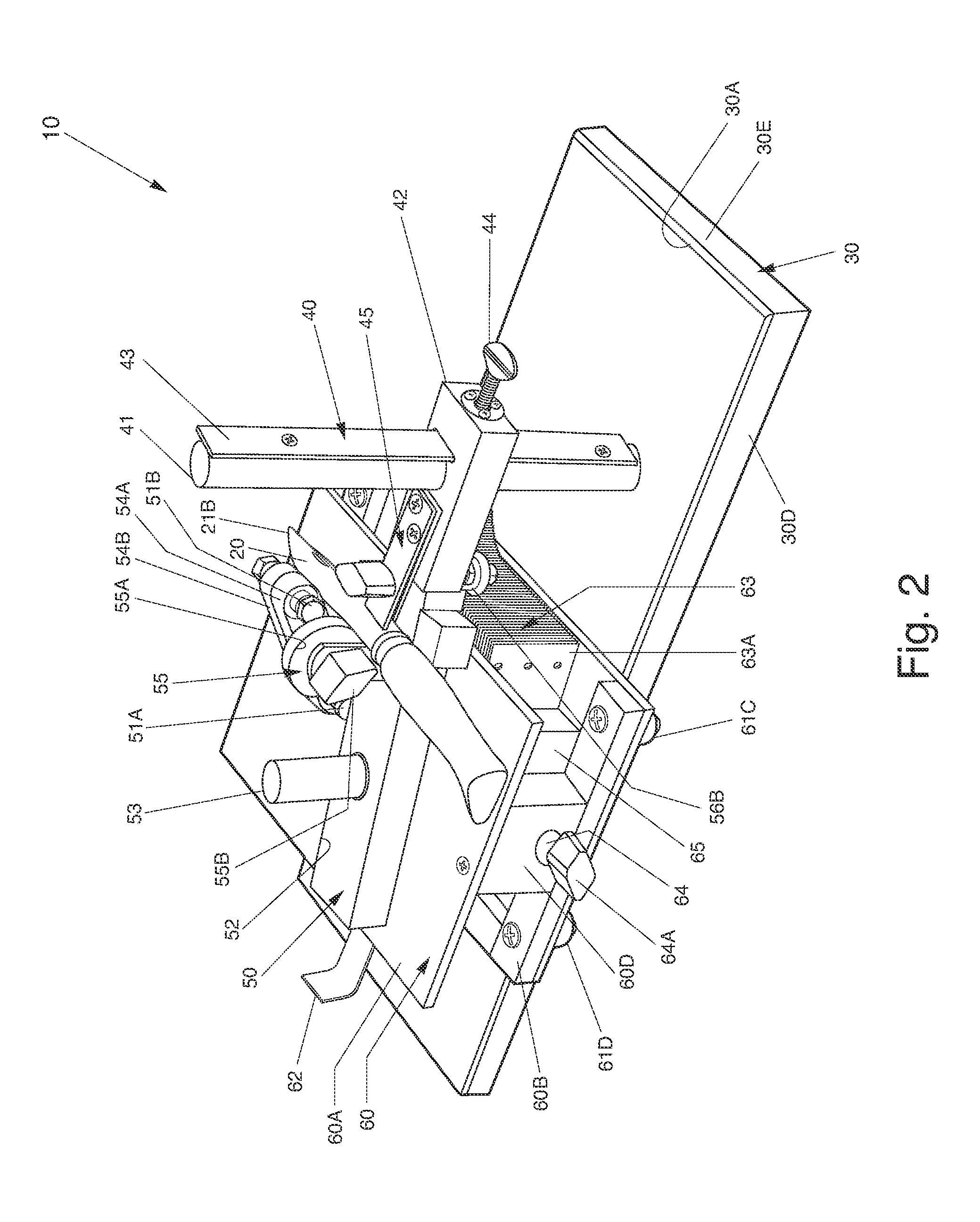Blade sharpening device with blade contour copying device
a blade and contour copying technology, applied in the direction of edge grinding machines, other manufacturing equipment/tools, manufacturing tools, etc., can solve the problems of difficult to obtain the skill of ordinary users of grinding medium, the user's lack of assistance in controlling the angle of the blade, and the use of grinding medium without further assistance. to achieve the effect of preventing overheating of the blad
- Summary
- Abstract
- Description
- Claims
- Application Information
AI Technical Summary
Benefits of technology
Problems solved by technology
Method used
Image
Examples
Embodiment Construction
[0040]The present invention solves the problems in blade sharpening devices by providing a new and unique construction for consistent and effective sharpening of blades. Generally, the present invention is a blade sharpening device 10 designed for sharpening a blade 20 for a uniform sharpening of the edge 21 thereof. Most importantly, the present invention provides a sharpening path defined by a contour of the blade 20 with minimal user input
[0041]Now referring to FIG. 1, the blade sharpening device 10 is designed for sharpening the blade 20 for a uniform sharpening of the edge 21 thereof. The blade sharpening device 10 includes a rectangular shaped base 30 having a top 30A, bottom 30B, and four sides 30C-F.
[0042]The base 30 contains a blade holder 40 for securing the blade 20 during sharpening. The blade holder 40, in one embodiment, contains a post 41 attached to the base 30 for securing the blade 20 during the sharpening process. The post 41 extends vertically from the top 30A of...
PUM
| Property | Measurement | Unit |
|---|---|---|
| angle | aaaaa | aaaaa |
| movement | aaaaa | aaaaa |
| rectangular shape | aaaaa | aaaaa |
Abstract
Description
Claims
Application Information
 Login to View More
Login to View More - R&D
- Intellectual Property
- Life Sciences
- Materials
- Tech Scout
- Unparalleled Data Quality
- Higher Quality Content
- 60% Fewer Hallucinations
Browse by: Latest US Patents, China's latest patents, Technical Efficacy Thesaurus, Application Domain, Technology Topic, Popular Technical Reports.
© 2025 PatSnap. All rights reserved.Legal|Privacy policy|Modern Slavery Act Transparency Statement|Sitemap|About US| Contact US: help@patsnap.com



